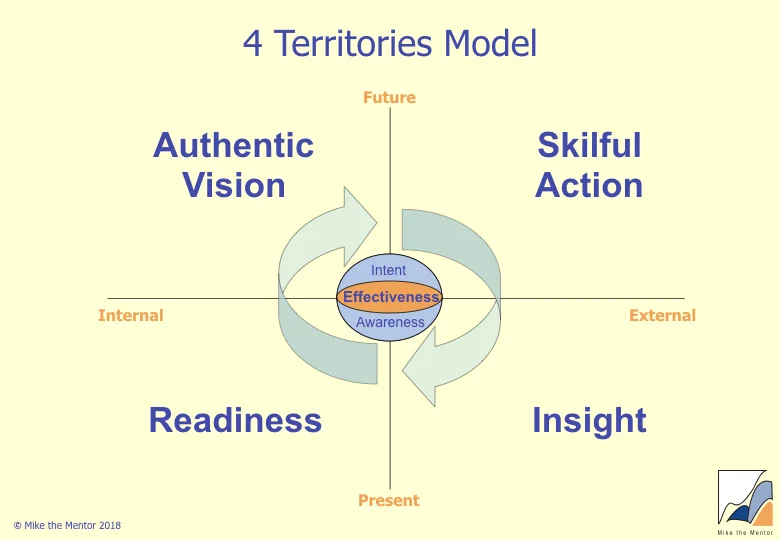Reality is not how we think it is!
/Summary
It is self-evident that we see the world as it is - as consisting of objects with various properties (eg, size, colour, position) located in and moving though 3-dimensional space and through time. Well, maybe not entirely as the world is - properties such as colour, sound and taste don’t exist as intrinsic qualities of objects but only in our perceptions of those objects. But, these apart, we obviously see the world as it is.
Except … we don’t! What we think of as reality is actually just an interface to the objective world, just as a computer desktop is an interface to a computer. Neither interface represents the truth of the world/computer, though both enable us to interact productively with the world/computer. This is the radical claim of Don Hoffman.
Introduction
We assume that our senses are simply windows onto objective reality and that they tell us the truth about this reality. We recognise that this is not the whole truth because some objects are too small or far away to see clearly and, on occasions, we are tricked by illusions. But broadly we believe that we have evolved to see the world increasingly accurately, and that this gives us an evolutionary advantage over those organisms that see the world less accurately. In short we believe that truer perceptions are fitter perceptions - that is they fit us better for survival.
This recognition that our perceptions don’t necessarily tell us the truth about reality goes back a long way. 2,400 years ago Democritus claimed that our perceptions of hot, cold, sweet, bitter and colour are conventions, and not real properties of objects. And 2,000 years later Galileo said something very similar:
I think that tastes, odors, colors, and so on are no more than mere names so far as the object in which we locate them are concerned, and that they reside in consciousness. Hence if the living creature were removed, all these qualities would be wiped away and annihilated. (Wikipedia)
Now Don Hoffman takes this much further, claiming not only that qualities such as colour, taste and sounds are in the eye (or mouth or ear) of the beholder, but objects are too - and also space and time! This is a radical claim, but his argument is a persuasive one.
Despite our intuitive sense that we see reality basically as it is, what we actually see is a representation of what reality affords us in terms of survival. This representation consists of icons (which we imagine to be real objects) existing in space-time (which we believe to be the basic nature of reality).
The Computer Desktop Metaphor
To make this more understandable, Hoffman uses the metaphor of the computer desktop. Imagine you have a folder on your desktop. You can look inside it, find and open a document, edit it and print it off. In doing this you happily treat the folder and the documents in it as real - but actually there is no folder, nor any documents. Instead there are integrated circuits, voltages, pixels, etc. But this you neither need nor want to know about.
In fact you actively want the computer interface to hide from you the actual ‘truth’ of the computer. If you had to engage with the actuality of the computer at the level of bits and electrons, writing even a simple email would be overwhelmingly difficult!
Like the computer interface, our own perceptual interface has evolved to hide from us those aspects of reality that aren’t relevant to our chances of survival, and to display the simple icons we need to survive long enough to raise offspring. These icons show us how to act to stay alive. As Hoffman says (p xiii):
Perception is not a window on objective reality. It is an interface that hides objective reality behind a veil of helpful icons (p xiii. This and other quotes are from Don Hoffman’s 2019 book The Case Against Reality: How evolution hid the truth from our eyes.)
So, whilst we must take our perceptions seriously, that doesn’t mean we should take them literally. Just as we wouldn’t drag a vital document on our desktop to the trash and expect that to have no consequences, so we wouldn’t stand on the tracks as a train speeds towards us and expect to be unscathed. But neither the document nor the train exist as we perceive them - though in both cases something does!
Fitness Beats Truth
Galileo (see quote above) argued that, when we close our eyes, the colour of objects is annihilated; when we hold our noses their smell doesn’t exist, and so on. But he thought that the objects themselves would continue to exist - as would most of us. But Hoffman has shown that:
evolution by natural selection entails a counterintuitive theory: the probability is zero that we see reality as it is. This theorem applies not just to taste, odor, and colour, but also to shape, position, mass and velocity - even to space and time. We see none of reality as it is. (p20)
This is difficult to get our heads round!
It makes sense that our perceptions would prioritise useful behaviours (ie, ones that would increase our chances of producing and raising offspring) over reporting truths about an independent world. But intuitively we expect usefulness and truthfulness to be be the same thing. However the Fitness-Beats-Truth (FBT) Theorem proves that there is a vanishingly small chance that we do see reality as it is - instead we perceive fitness pay-offs, which then guide useful actions. So, whilst something exists independently of us, that something doesn’t match our perceptions (just as our experience of the computer interface doesn’t match the underlying reality of the computer).
Further, Hoffman asserts that things exist only when perceived. As he explains:
A spoon is an icon of an interface, not a truth that persists when no one observes. My spoon is my icon, describing potential payoffs and how to get them. I open my eyes and construct a spoon; that icon now exists and I can use it to wrangle payoffs. I close my eyes. My spoon, for the moment, ceases to exist because I cease to construct it. Something continues to exist when I look away, but whatever it is, it’s not a spoon, and not any object in space-time. (p79).
Or, as Rupert Spira puts it:
An object exists because we think about it; we don’t think about it because it exists.
Our perceptual interface shows us what our environment affords us (ie, what it offers us in terms of surviving long enough to produce and raise our offspring). So the ‘spoon-ness’ of our spoon icon expresses its potential to be useful and suggests actions I might take with it, and its distance away in the space-time interface represents the energy cost of acquiring it.
Our eyes are reporters on the fitness beat, searching for a scoop, looking for intelligence about fitness that is worth decoding. A message, once decoded, typically appears in a standard format. We see the decoded message as an object in space, whose category, shape, location and orientation informs us how to act the glean the fitness points we need. p173)
So …?
If our perception of reality is not the truth of reality, but an interface through which we can manipulate reality, what are the consequences?
if reality is not how we think it is, then perhaps ideas such as shamans travelling to other realms, healers working with people’s energy fields and auras, the oneness of everything, and other ideas which may appear flakey to some are representing aspects of ultimate reality through extended perceptual interfaces. Is this already happening for syntesthetes and people having psychedelic experiences?
Recognising that our perceptions have evolved to hide from us much of reality and that reality is far richer and unimaginable than we can know may help us restore our sense of the sacred to our lives.
We can soften our prejudices about the world being a particular way, since one thing we can be certain of is that it is not the way we think it is! And if it is not as we think it is, even if we don’t know what it is actually like, then we can start to view our perceptions and experience as resources we can use rather than truths we have to abide by.
We can more easily recognise that we see the world as we are, not as it is.
If we don’t see reality as it is then much research into perception and brain function is misdirected. In particular if space and time are merely representations used in our perceptual interface, how can anything within space and time - such as neurons and their activity, create our consciousness? (Just as how can the desktop in a computer interface tells us anything about the the underlying hardware and software of the computer?)
Hoffman concludes his book thus:
What is spacetime? This book has offered you the red pill. Spacetime is your virtual reality, a headset of your own making. The objects you see are your invention. You created them with a glance and destroy them with a blink.
You have worn this headset all your life. What happens if you take it off? p202
For more on this see Don Hoffman’s 2015 TED Talk Do we see reality as it is?, see his page on the University of California website, or read his 2019 book The Case Against Reality: How evolution hid the truth from our eyes.

